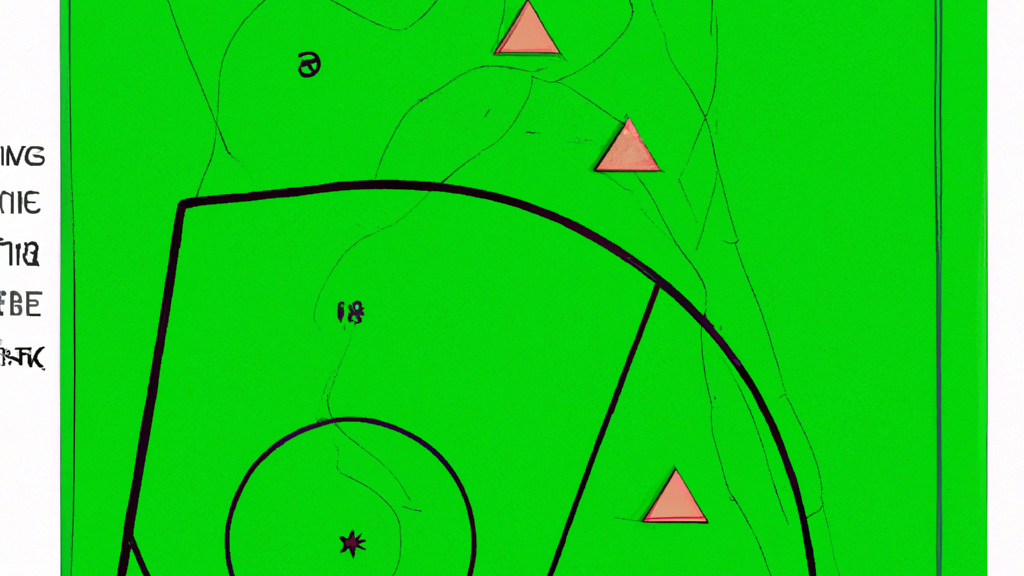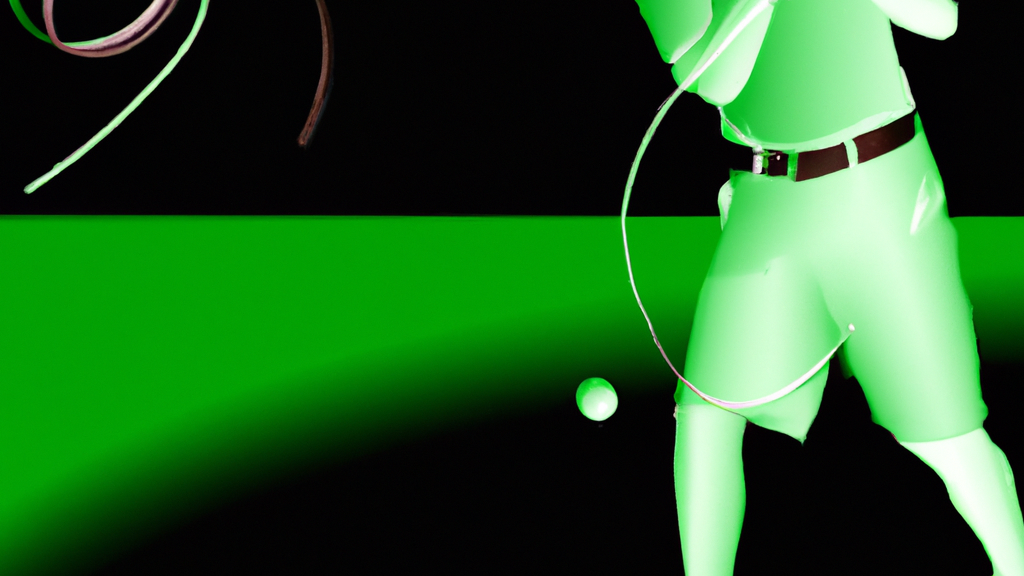GOLF COURSE MANAGEMENT: A COMPREHENSIVE GUIDE TO FERTILIZATION
Golf courses are a beautiful sight to behold, with their lush green fairways and perfectly manicured greens. However, maintaining such a pristine landscape requires a lot of effort and expertise. One of the most critical aspects of golf course management is fertilization. A comprehensive guide to fertilization is essential for golf course managers to ensure that their courses remain healthy and vibrant. In this article, we will explore the various types of fertilizers, their application methods, and the best practices for fertilization.
Whether you are a golf course manager, a golf enthusiast, or simply someone interested in the science behind maintaining a beautiful golf course, this guide will provide you with all the information you need. So, let’s dive in and discover the secrets to achieving a healthy and vibrant golf course through proper fertilization.

Golf Course Fertilization: A Comprehensive Guide
Golf courses are a beautiful and serene place to spend a day, but they require a lot of maintenance to keep them looking their best. One of the most important aspects of golf course management is fertilization. Fertilization is the process of adding nutrients to the soil to promote healthy grass growth. In this comprehensive guide, we will explore the different types of fertilizers, when to apply them, and how to ensure that your golf course is getting the nutrients it needs to thrive.
Types of Fertilizers
There are two main types of fertilizers: organic and synthetic.
- Organic fertilizers are made from natural materials, such as animal waste, compost, and bone meal. They are slow-release fertilizers, meaning that they release nutrients slowly over time. Organic fertilizers are a great choice for golf courses because they are environmentally friendly and promote healthy soil. They also help to reduce the risk of nutrient leaching, which can lead to pollution of nearby water sources.
- Synthetic fertilizers, on the other hand, are made from chemical compounds. They are fast-release fertilizers, meaning that they release nutrients quickly. Synthetic fertilizers are a popular choice for golf courses because they are easy to apply and provide quick results. However, they can be harmful to the environment if not used properly. Synthetic fertilizers can also lead to nutrient leaching, which can cause pollution of nearby water sources.
When to Apply Fertilizer
The timing of fertilizer application is crucial to the health of your golf course. Fertilizer should be applied when the grass is actively growing. This is typically in the spring and fall, when temperatures are mild and there is plenty of moisture in the soil.
Applying fertilizer during the summer months can lead to nutrient burn, which can damage the grass.
It is also important to consider the type of grass on your golf course when determining when to apply fertilizer. Cool-season grasses, such as Kentucky bluegrass and fescue, should be fertilized in the fall and spring. Warm-season grasses, such as Bermuda grass and zoysia grass, should be fertilized in the late spring and summer.
How to Apply Fertilizer
There are several methods for applying fertilizer to your golf course.
- The most common method is broadcasting, which involves spreading the fertilizer evenly over the entire course. This can be done by hand or with a spreader.
- Another method is banding, which involves applying the fertilizer in a narrow band along the edge of the fairway. This method is useful for targeting specific areas that need extra nutrients.
It is important to apply fertilizer evenly to avoid over-fertilization in some areas and under-fertilization in others. Over-fertilization can lead to nutrient burn, while under-fertilization can lead to weak and unhealthy grass.
How Much Fertilizer to Apply
The amount of fertilizer to apply depends on several factors, including the type of grass, the soil type, and the climate. It is important to follow the manufacturer’s instructions when applying fertilizer to ensure that you are applying the correct amount. Over-fertilization can lead to nutrient burn, while under-fertilization can lead to weak and unhealthy grass.
It is also important to consider the nutrient content of the fertilizer. Fertilizers are labeled with three numbers, which represent the percentage of nitrogen, phosphorus, and potassium in the fertilizer.
Nitrogen is the most important nutrient for grass growth, so it is important to choose a fertilizer with a high nitrogen content.
Testing the Soil
Before applying fertilizer, it is important to test the soil to determine its nutrient content. Soil testing can help you determine the pH level of the soil, as well as the levels of nitrogen, phosphorus, and potassium. This information can help you choose the right fertilizer and determine the correct amount to apply.
Soil testing should be done at least once a year to ensure that your golf course is getting the nutrients it needs to thrive. Testing can be done by a professional or with a home testing kit.
Conclusion
Fertilization is an important aspect of golf course management. Choosing the right fertilizer, applying it at the right time, and applying the correct amount can help promote healthy grass growth and ensure that your golf course looks its best.
It is important to consider the type of grass on your golf course, as well as the soil type and climate, when determining when and how much fertilizer to apply. Soil testing can also help you determine the correct amount of fertilizer to apply. By following these guidelines, you can ensure that your golf course is getting the nutrients it needs to thrive.

- Turfgrass Fertilization: A Basic Guide for Professional Turfgrass …
Nov 10, 2016 … Jones, “Turf Analysis,” Golf Course Management, 48, no. 1 (1980): 29-32; H. Marschner, Mineral Nutrition of Higher Plants (New York: Academic … - Your Guide to Golf Course Maintenance Equipment | Lightspeed
Feb 18, 2021 … Beginner’s Guide to Golf Course Maintenance Equipment. Golfers have many options in where to tee it up these days, and courses with a … - LINAP Initiatives – NYS Dept. of Environmental Conservation
The LINAP Fertilizer Management webpage has more information on current and past … such as the permitting roadmap and golf course interactive map. - Golf Course Fertilizer (The Complete Guide)
Jan 25, 2023 … This is particularly important on the greens, which receive more concentrated traffic than any other spot on the course. Maintenance teams … - RMGCSA – Home Page
rmgcsa Releases Colorado Golf Best Management Practices Guide. This guide promotes environmental stewardship, golf course playability, and the overall health of … - Creeping Bentgrass Yield Prediction With Machine Learning Models …
Nov 4, 2021 … Golf course turfgrass is usually intensively fertilized, … less extensive information on the plant characteristics, management practices, … - Buy Lawn Fertilizers Online | Golf Course Lawn Store
29 products … Complete 14-7-14 – Lebanon Country Club Fertilizer … Looking for a comprehensive guide to all your potential lawn fertilization questions? - Comprehensive Procurement Guidelines for Landscaping Products …
Jan 4, 2023 … Find manufacturers/suppliers of recycled-content products in our database … on school campuses, and for golf course and turf maintenance. - Golf Course Management | Envu Environmental Science US
Envu has a great lineup of golf course management products to keep cool-season and warm-season turf strong, disease free and … Golf Course Solutions Guide. - A continued investigation into nutrient use and management on U.S. …
Nutrient management is one of the most important components of a comprehensive best management practices (BMPs) program implemented on golf courses.
Interesting facts about Golf Course Management: A Comprehensive Guide to Fertilization
- The first recorded game of golf was played in Scotland in the 15th century.
- Golf is one of only two sports to have been played on the moon (the other being javelin).
- The Masters Tournament, held annually at Augusta National Golf Club, has a tradition where the winner receives a green jacket.
- Tiger Woods holds the record for most consecutive weeks as world number one golfer with 281 weeks between June 2005 and October 2010.
- In professional golf tournaments, caddies are not allowed to use GPS devices or rangefinders to measure distances on the course.
- The longest hole in professional golf is currently found at Gunsan Country Club in South Korea and measures over 1,100 yards long!
- Many famous celebrities are avid golfers including Justin Timberlake, Samuel L Jackson and Bill Murray who even owns his own minor league baseball team called “The Charleston RiverDogs”.





